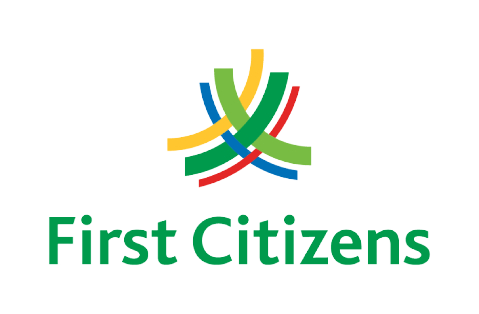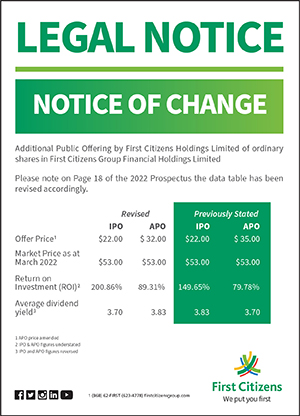Can The End of Extreme Poverty in the Caribbean Be Achieved By 2030?
Commentary

Introduction to the Sustainable Development Goals:
In 2000, the eight Millennium Development Goals (MDGs) were established at the United Nations Millennium Summit where 189 country leaders gathered to address the most prominent global challenges. The goals were set to be achieved by 2015, however, while much had been accomplished, many were not entirely successful while others failed in their initial stages. As such, Agenda 2030 for Sustainable Development outlines 17 sustainable development goals (SDGs) to be achieved by the 193 United Nations (UN) member states by 2030. Agenda 2030 is a roadmap for the planet as well as its inhabitants that aims to guarantee sustainable economic and social advancement worldwide. This initiative replaced the MDGs in 2015, however, for the purpose of this article, the progress of SDG 1 will be highlighted.
SDG 1: No Poverty Progress
The first and most prevalent Sustainable Development Goal (SDG) is intended to eliminate all forms of extreme poverty, for all persons, everywhere by 2030. Extreme poverty is the situation characterised by people having to survive on less than $2.15 per person per day at the 2017 purchasing power parity (PPP). According to the United Nations Statistical Division (UNSD), there was a slim decrease in the global working poverty rate from 7.7 % in 2020 to 6.9% in 2023, however, in the face of this decrease, approximately 241 million workers remained in poverty with minor change anticipated for 2024. As illustrated in Figure 1, when looking at overall performance (world), there is a positive global trend across the regions from a poverty rate of 8.4% in 2015 to 6.9% in 2023. When the regions are separated on an individual basis, the majority of the working population living in extreme poverty was revealed to reside in sub-Saharan Africa at 145 million. Notably, Central and Southern Asia presented the largest decrease in working poverty between 2015 and 2023 from 14.9% to 8% respectively. In contrast, Northern Africa and Western Asia experienced an increase of 3.7% from 2015 to 2023.


Global efforts to eradicate extreme poverty worldwide were significantly hampered by the shocks of the COVID-19 pandemic between 2020 and 2022 causing an increase in the global poverty rate and setting back progress in some regions by three years. Recovery following this period has been quite irregular as depicted in Figure 2 which also portrays lower-middle-income countries lingering behind. As such, the UN stated that if current trends persist and there is no hastening in the implementation of poverty reduction measures amid climate change and natural disasters, an estimated 590 million people may still be falling victim to poverty by 2030. Halting or drastically decreasing poverty rates would demand an all-inclusive approach comprising pliable economic policy, human capital investments, social protection initiatives, the fostering of international cooperation and deducing measures to target inequality and climate resilience.
World Progress Toward SDG 1
Considerable progress has been made toward achieving SDG1 utilizing measures such as the International Cooperation Strategy adopted by Switzerland, the National Social Development Program (NSDP) by Trinidad and Tobago and the ongoing Borgen Project adopted by several European countries. Notably, other global institutions and bodies are providing significant assistance, some of which are the UN, the Caribbean Development Bank (CDB), the OECS and the World Bank. Currently, countries within the European and Asian continents have made the most progress compared to others, with the African continent performing the worst. Most current data provided by the Human Development Report 2024 (HDR) illustrates each region’s various human development indices (HDI) with numbers closer to 1 representing higher human development. Europe and Central Asia recorded an index of 0.802, East Asia and the Pacific with 0.766, Latin America and the Caribbean with 0.763, Arab States with 0.704, South Asia with 0.641 and Sub-Saharan Africa with an index of 0.549. Caribbean territories will be overviewed for this article, focusing on countries such as Trinidad and Tobago, Jamaica and Barbados as proxies.
The Caribbean:
As per data from the UNDP’s Human Development Report 2016, Caribbean countries such as Barbados, Jamaica and Trinidad recorded a Human Development Index (HDI) score of 0.795, 0.73 and 0.78 respectively in 2015 as illustrated in Figure 3. It should be noted that HDI scores are higher when life expectancy, education levels and gross national income are higher. Therefore, in 2015, Barbados ranked #54 in the HDI ranking amongst 193 countries – higher than other Caribbean counterparts, Trinidad and Tobago ranked #65 and Jamaica ranked #94. In contrast, according to most recent data Barbados, Trinidad and Tobago and Jamaica experienced an HDI score of 0.809, 0.814 and 0.706 resulting in rankings of #62, #60 and #115 respectively in 2022 out of 193 countries. Barbados’ ability to achieve this HDI and by extension, ranking, is due to its long history of robust institutions and political stability. Although agriculture and tourism have historically been the main drivers of the nation’s economy, the government has also put measures in place to promote investment in other industries, like manufacturing and financial services. Additionally, Barbados has made significant investments in human capital development and education over the years and intends to allocate approximately BBD417 million for the financial year 2024/2025, which will aid in producing a skilled labour force and drawing in foreign funding. Trinidad and Tobago has joined The Bahamas and Barbados in the HDR’s Very High Human Development category. This resulted from significant strides in the countries’ performance mainly due to the increase in both the mean years of schooling and life expectancy by 11% and 6% respectively between 2015 and 2024. It is also supported through several strategic objectives, such as fostering decent working conditions, bolstering labour oversight bodies, updating labour laws, and continuing to develop policies and initiatives toward the realisation of the Decent Work Agenda. Additionally, primary and secondary education has been provided at no expense to the public and in order to increase productivity and enhance service delivery, the system has been modernised with the addition of a School and Learning Management System and School Based Management Standards. Notwithstanding gains in the number of doctors and nurses, significant administrative and infrastructural upgrades have been made to support the universal healthcare system, for example, the supplementation of approximately TTD5 billion per year to cover healthcare expenditure announced in June 2024. Lastly, Jamaica’s current HDI allowed it to rank #115 in 2022 from #94 where it stood in 2015, mostly attributable to its decrease in life expectancy at birth by 6.9%.

Conclusion:
In retrospect, the proportion of the global population experiencing extreme poverty increased from 8.4% in 2015 to 6.9% in 2023, primarily due to poverty increases in low and lower-middle-income nations. Conversely, extreme poverty continues to decline in upper-middle and high-income countries, caused by swift fiscal support for vulnerable groups. With the exception of low-income nations, most countries had seen a return to pre-pandemic levels of extreme poverty by 2022. One in four individuals in the 75 most vulnerable countries (more than eight times the global average of extreme poverty) live on less than $2.15 per day, making them eligible for concessional funding from the World Bank’s International Development Association. The average poverty rate in one in three of these nations has significantly increased beyond pre-pandemic levels. There were 23 million more people living in extreme poverty in 2022 than there were in 2019, totalling 712 million people, thus representing 9% of the world’s population. If current trends continue, projections indicate that 590 million people, or 6.9% of the world’s population might still live in extreme poverty by 2030. As for the Caribbean, Hurricane Beryl in July 2024, affected countries like Grenada, Jamaica, and St Vincent and the Grenadines, causing extensive damage and worsening existing poverty by disrupting livelihoods and access to basic needs. As such, eradicating extreme poverty remains a major challenge for territories to overcome and although the Caribbean is making progress in sustainable development as the number of persons still living in extreme poverty has declined, there is still a great deal of work to be done. Thus, the United Nations anticipates that the goal of eliminating poverty by 2030 may not be possible given current statistics and only six years left to find a solution.
DISCLAIMER
First Citizens Bank Limited (hereinafter “the Bank”) has prepared this report which is provided for informational purposes only and without any obligation, whether contractual or otherwise. The content of the report is subject to change without any prior notice. All opinions and estimates in the report constitute the author’s own judgment as at the date of the report. All information contained in the report that has been obtained or arrived at from sources which the Bank believes to be reliable in good faith but the Bank disclaims any warranty, express or implied, as to the accuracy, timeliness, completeness of the information given or the assessments made in the report and opinions expressed in the report may change without notice. The Bank disclaims any and all warranties, express or implied, including without limitation warranties of satisfactory quality and fitness for a particular purpose with respect to the information contained in the report. This report does not constitute nor is it intended as a solicitation, an offer, a recommendation to buy, hold, or sell any securities, products, service, investment or a recommendation to participate in any particular trading scheme discussed herein. The securities discussed in this report may not be suitable to all investors, therefore Investors wishing to purchase any of the securities mentioned should consult an investment adviser. The information in this report is not intended, in part or in whole, as financial advice. The information in this report shall not be used as part of any prospectus, offering memorandum or other disclosure ascribable to any issuer of securities. The use of the information in this report for the purpose of or with the effect of incorporating any such information into any disclosure intended for any investor or potential investor is not authorized.
DISCLOSURE
We, First Citizens Bank Limited hereby state that (1) the views expressed in this Research report reflect our personal view about any or all of the subject securities or issuers referred to in this Research report, (2) we are a beneficial owner of securities of the issuer (3) no part of our compensation was, is or will be directly or indirectly related to the specific recommendations or views expressed in this Research report (4) we have acted as underwriter in the distribution of securities referred to in this Research report in the three years immediately preceding and (5) we do have a direct or indirect financial or other interest in the subject securities or issuers referred to in this Research report.

